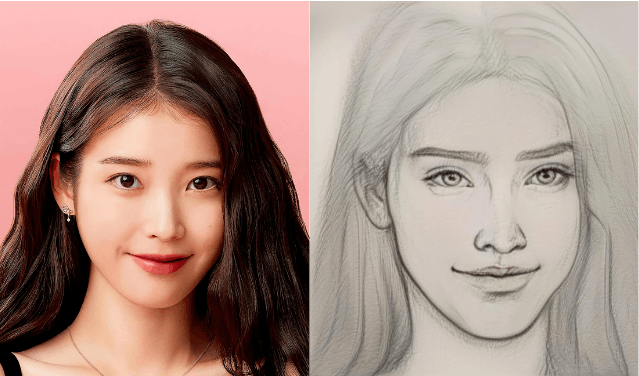Creating visually stunning, personalized, and stylized faces is no longer a job confined to expert artists or graphic designers. With
In this guide, you'll find information on the use cases of JoJoGAN, technical implementation details, and limitations. We'll also cover the specific inputs and outputs required for the model. Lastly, a step-by-step walkthrough will guide you through the actual usage of the model via code.
Use Cases and Target Audience
JoJoGAN is not just a tool for creating captivating images; it's a versatile asset for:
-
Artistic Applications: Artists can create unique and visually appealing portraits with ease.
-
Virtual Avatars: Developers in the gaming and virtual reality sectors can create highly customizable and realistic virtual characters.
-
Social Media Filters: Social media platforms can integrate JoJoGAN to offer personalized profile picture effects to their users.
-
Advertising and Marketing: Brands can stylize their ambassadors' faces in campaigns for higher visual impact.
The flexibility and efficiency of JoJoGAN make it ideal for artists, software developers, social media platforms, and marketing agencies.
About JoJoGAN
JoJoGAN is a deep-learning model designed for one-shot face stylization. Developed by
Technical Implementation
The model is implemented using Nvidia T4 GPUs and has an average runtime of 14 seconds per run, with a cost of $0.0077 USD per run. Technically, the model is impressive because it employs GAN architecture with a blend of perceptual and identity loss functions. This unique combination ensures that the output images are both aesthetically pleasing and accurate in terms of identity.
Limitations
While JoJoGAN offers a lot, there are some limitations to be aware of:
- Limited to Facial Images: The model is specifically designed for stylizing faces; it is not suitable for full-body or non-facial images.
- Style Constraints: The output is constrained by the style of the reference image provided.
- Resource Intensive: Requires a powerful GPU for optimal performance.
Understanding the Inputs and Outputs of JoJoGAN
Before diving into the usage guide, let's understand what JoJoGAN requires as inputs and what it provides as outputs.
Inputs
input_face: A file containing the photo of the human face you want to stylize.pretrained: A string identifier of a pre-trained style. Allowed values includeart,arcane_multi,sketch_multi, etc.style_img_0tostyle_img_3: Optional face style images. These are unused if a pre-trained style is set.preserve_color: A boolean to decide whether to preserve the colors of the original image.num_iter: An integer specifying the number of fine-tuning steps.
Outputs
- The model outputs a file containing the stylized face image.
With this understanding, let’s move to the step-by-step guide.
Step-by-Step Guide to Using JoJoGAN
If you don't want to code, you can play around with the JoJoGAN
Step 1: Install Dependencies
First, you'll need to install the Node.js client for Replicate.
npm install replicate
Step 2: Set API Token
Copy your API token and authenticate it by setting it as an environment variable.
export REPLICATE_API_TOKEN=your_api_token_here
Step 3: Run the Model
Use the following Node.js code to run the model.
import Replicate from "replicate";
const replicate = new Replicate({
auth: process.env.REPLICATE_API_TOKEN,
});
const output = await replicate.run
Model("mchong6/jojogan", {
input_face: "path/to/your/input/image.jpg",
pretrained: "art",
});
const stylizedImage = output.files.stylized_face;
Step 4: Download and Review Output
After the model has finished running, the output will be saved in stylizedImage. You can review the stylized face in that object.
Conclusion
JoJoGAN offers a plethora of possibilities in the realm of artistic image editing and stylization. Its use cases extend far beyond the art world and into practical applications for developers, marketers, and social media platforms.
Further Reading
For those interested in diving deeper into JoJoGAN, image stylization, and related topics, here's a curated list of resources to help you further your understanding and application:
-
JoJoGAN GitHub Repository : The official GitHub repository for the JoJoGAN project provides code, pre-trained models, and technical explanations. A valuable resource for developers interested in diving deeper. -
Generative Adversarial Networks Paper by Ian Goodfellow : This seminal paper introduced the concept of Generative Adversarial Networks (GANs). It is a must-read to grasp the foundational principles that JoJoGAN builds upon. -
Coursera GAN Specialization : This Coursera course offers an end-to-end understanding of GANs, from theory to practical application. Suitable for those looking to apply GANs in various domains. -
Artistic Stylization in Computer Graphics ACM Paper : This academic paper provides an in-depth look at stylization techniques in computer graphics, an essential concept for JoJoGAN and similar models.
By leveraging these resources, you can deepen your understanding and practical application of GANs, image stylization, and JoJoGAN. Whether you're a developer, a founder, or an AI enthusiast, these resources offer something for everyone.
Also published here.


